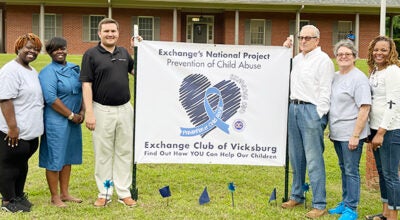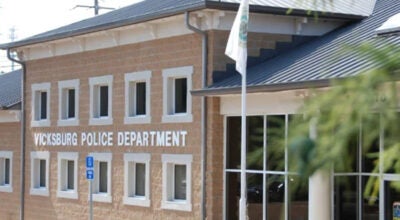Repair bridge now, commission told
Published 12:00 am Thursday, August 9, 2001
The U.S. 80 bridge over the Mississippi River, foreground.
[08/09/01] Engineers said Wednesday that U.S. 80 Mississippi River bridge repairs are needed immediately to correct a support that has been moving out of position.
Jack Shortess of the Baton Rouge firm HNTB told members of the Vicksburg Bridge Commission that two plans for lining up Pier 2 are being prepared. The pier, the second from the Mississippi side, has shifted at least 5 inches west.
“We can’t afford to let that pier move toward the river anymore,” Shortess said.
The commission responsible for the upkeep of the 71-year-old span has been funding studies by HNTB and the U.S. Army Corps of Engineers to determine the cause of the movement in the pier and sinking in a railroad support.
The bridge is owned by Warren County and operated as a business. The roadbed has been closed for three years due to deterioration of concrete. Trains use the crossing every day.
Pier 2 has been moving a little each year since the bridge was built in 1930. In 1997 when the pier had moved nearly 6 inches, work was done to reset the support.
Last month, commission members learned that a study by the Louisiana Department of Transportation and Development had revealed that two supports for the Interstate 20 bridge, also on the Mississippi side, have been shifting at a similar rate. That bridge, which opened to traffic in 1973, runs parallel to the U.S. 80 bridge less than a mile down river.
“Its really hard to say,” what will happen, Shortess said. “Its just not a good situation for the pier.”
Shortess said that HNTB engineers are working on two options to reset the pier, but would not say what those plans are. He said those plans would be presented to the commission as soon as possible.
He said there were no cost estimates available.
“We’re just in the preliminary stages,” Shortess said.
Previously when the pier was realigned, the span of the bridge was jacked up and the rocker at the top of the support was reset. Shortess said that the rocker, which moves with the bridge to allow for wind, water movement and temperature, has moved to nearly its limit.
A year-long study by the Corps did not connect movement in the bank to the movement of the pier as engineers had speculated. A separate hydrographic survey of the river bottom has found no noticeable loss of material on the bank.
Shortess said no certain cause for the pier movement had been determined, but it is possible that the bank movement is over a larger area and deeper underground than that studied by the Corps. Devices used by the Corps to measure land movement had been set 100 feet into the ground.
“We still have no new information from the Corps,” he said.
Separately, LDOTD officials said they will soon begin a $2 million study of the river bank to determine the cause of the movement in two piers on the I-20 bridge, now being sandblasted and painted for the first time since it opened. Louisiana officials said they will share their findings with the local bridge commission.
The U.S. 80 bridge is the only railroad crossing of the river between Memphis and Baton Rouge and Warren County finances its upkeep with rail tolls.
HNTB has estimated a minimum cost of $4 million to repair the pier and a railroad support that has been sinking at the U.S. 80 bridge. Separately, the cost to repair the roadway has been estimated at $2.8 million over a five-year period. The commission has $5.5 million in reserves.
The engineering firm has continued to recommend that the U.S. 80 bridge remain closed to traffic until the cause of the movement is determined and corrected. Supervisors ordered a non-binding referendum two years ago in which voters showed a preference for reopening the roadbed over other alternatives which included selling the bridge and converting it into a pedestrian park.





